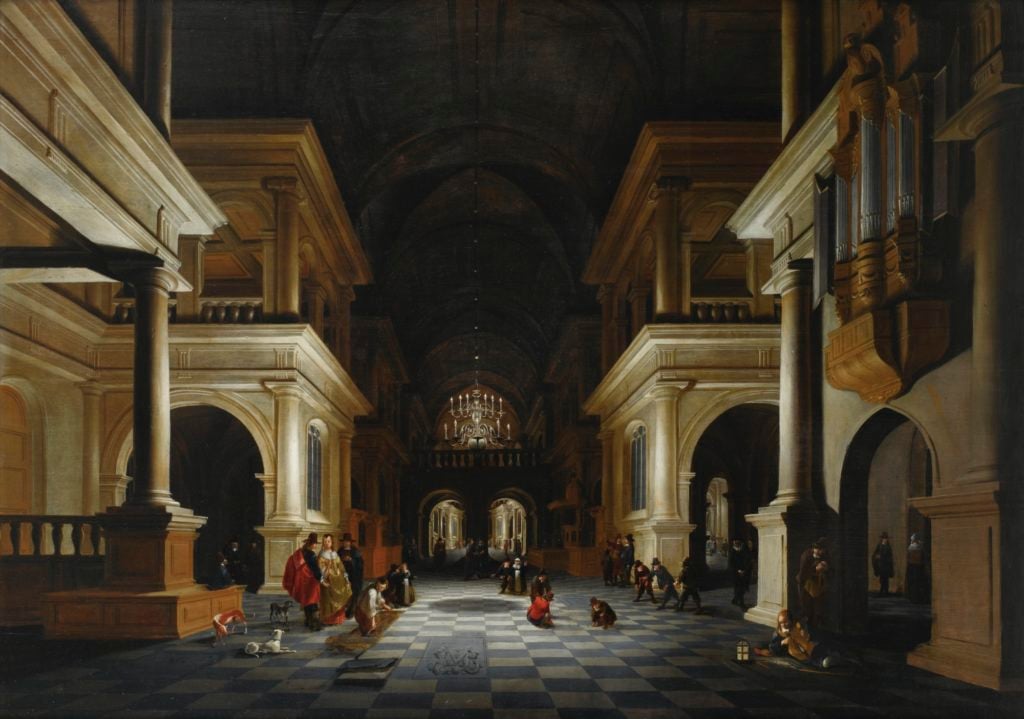Opinion
Anthonie de Lorme, A Dutch Master of Space
THE DAILY PIC: De Lorme's Dutch church, on sale at Sotheby's, seems amazingly real once you learn how to look.

THE DAILY PIC: De Lorme's Dutch church, on sale at Sotheby's, seems amazingly real once you learn how to look.

THE DAILY PIC (#1802): Last night, I saw this 17th-century Dutch painting in the oddest of places: At Fat Free in New York, a space devoted to street art. The gallery had asked a bunch of its artists to riff on reproductions of Old Master paintings from the Sotheby’s auction next Thursday, and for a few hours yesterday the originals were shown next to the riffs.
I’m way too ignorant of street art to comment on what the Fat Free artists produced, but I’ve studied enough Dutch architectural views to feel on safer ground with today’s Pic, which was painted by a certain Anthonie de Lorme at the very start of his career in the early 1630s. He seems to have had a remarkably narrow specialization, even by the pigeonholes that were standard in Dutch art: de Lorme was expert at rendering the bold light effects caused by candles and torches in churches at night. In this example, notice the lovely way he’s captured how the brass sphere in the candelabrum casts a big round shadow on the floor below.
There’s something else that this painting captures: The way modern habits of viewing and thinking don’t do justice to the paintings of the past. Look at de Lorme’s work with 21st-century eyes, and its building and composition seem weird and out of whack: There’s too much happening at the bottom of the picture and an endless amount of church ceiling at its top, in a structure that looks way too tall and long for anything a Dutch architect might have conceived. (De Lorme’s building is almost certainly imaginary.) But view the picture from say ten inches away, and from a point about one fifth of the way up, as the perspective demands—as any Dutch art lover would have known to do—and the whole thing pulls together into a much more normal, coherent view of a credible building.
That—to ride a hobby horse of mine one more time—is because 17th-century artists didn’t think in terms of compositions spread across flat surfaces: That’s our formalist, modernist view, derived as much as anything from spending time with little reproductions of art in books and on screens, where the whole picture comes at you in one glance. Whereas the screen-free Old Masters conceived, first, of the three-dimensional reality implied in their scenes, which they then happened to render in two-dimensions from one particular spot in space. To “read” a picture by someone like de Lorme, you have to know enough about perspective to unpack the world it implies, and then to wander through it; you can’t scan its surface from a distance, at one go.
For a full survey of past Daily Pics visit blakegopnik.com/archive.